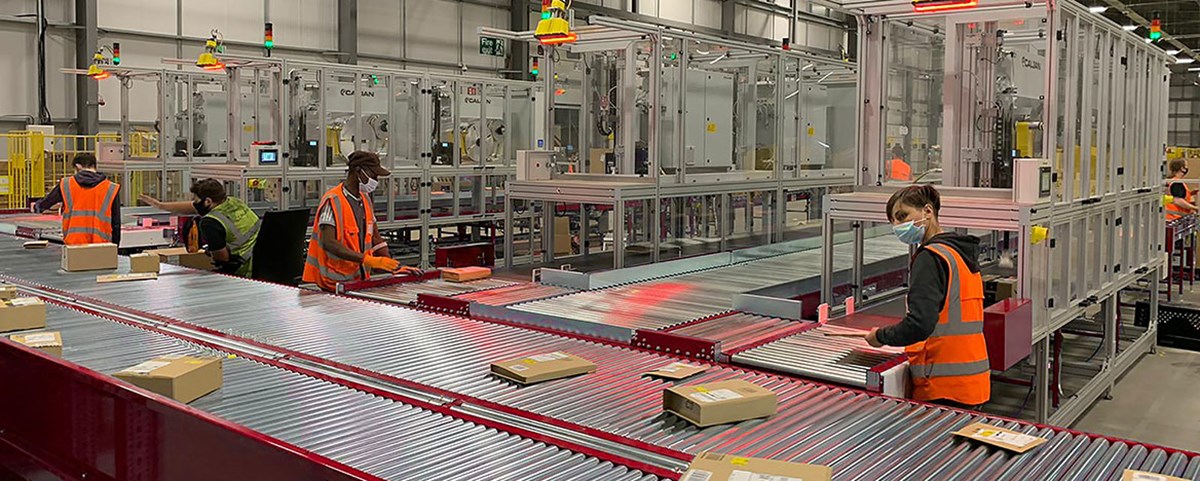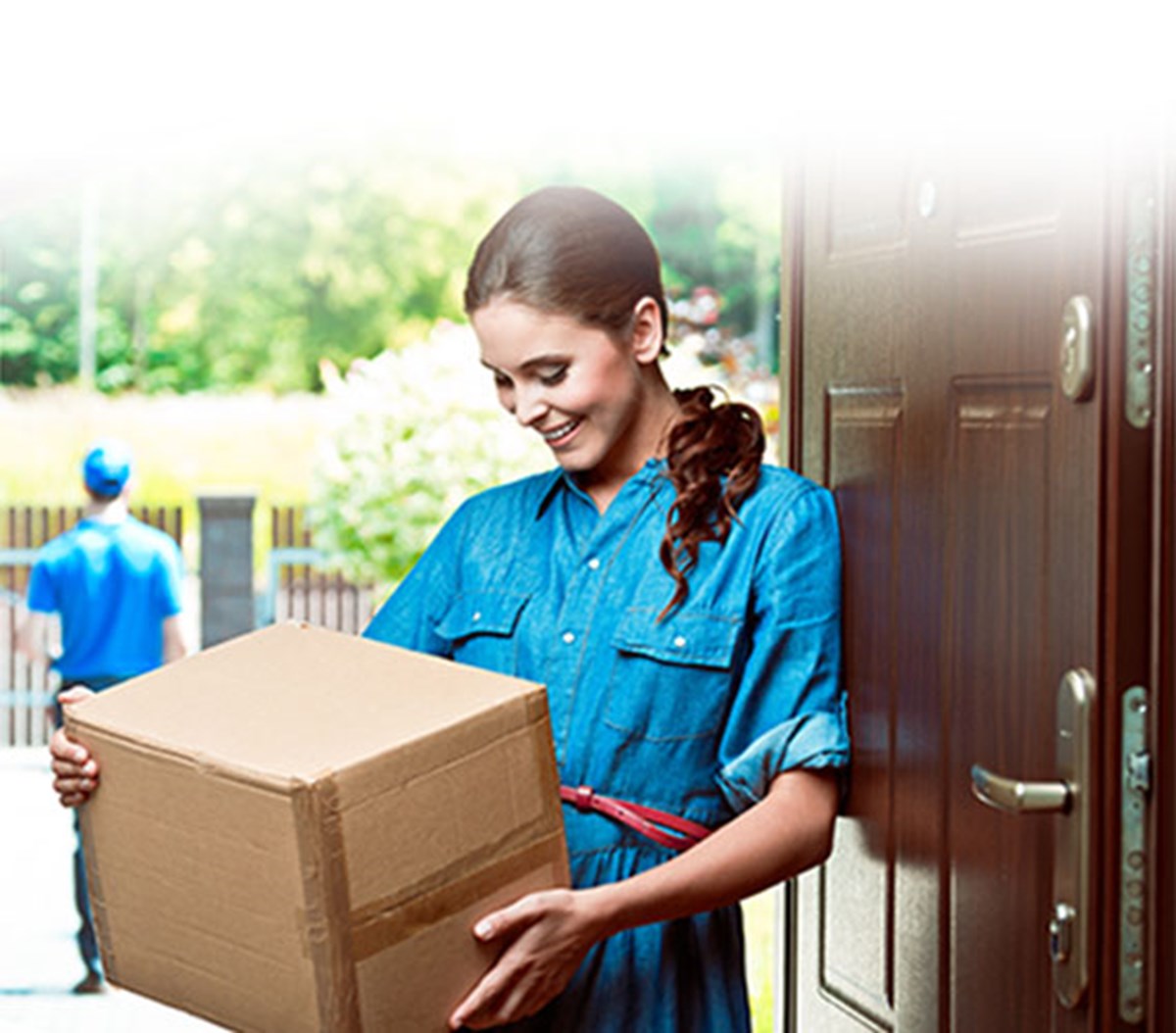The challenges of e-commerce in a warehouse facility
The pandemic has resulted in unprecedented growth in e-commerce, leaving retailers and their logistics partners overwhelmed by the sheer volume of packages to pack, label, and ship. In a bid to keep up, many retailers are accelerating their plans to optimise and automate warehouse facilities.
Fast Track
You don't have time to read the whole story now? Get the highlights here and download the PDF for later.
- Bringing in more automation to optimise the warehouse processes will help retailers increase capacity.
- The change in online consumer behaviour results in high volumes of outbound parcels and inbound parcels, which is challenging warehouse capacity.
- A top priority is investing in new equipment and optimising the current warehouse to handle both pallets and loose-loaded cargo efficiently.

The change in consumer behaviour is evident in most high streets. Social distancing measures have resulted in footfall numbers plummeting, making it increasingly difficult for traditional retailers to meet their business targets whilst striving to maintain a cost-effective online operation and meet the customer’s changing delivery demands.
Challenged to attract the necessary labour, the extraordinary growth in e-commerce has prompted warehouse and logistics managers to optimise and automate parts of their operation. Implementing new automated solutions to transform the flow of parcels through their warehouses is a top priority to maintain a cost-effective operation.
Consumer behaviour is shaping warehouse operations
For retailers and their logistics partners (3PLs), the growing consumer demand highlights the necessity for infrastructure upgrades and process optimisations.
The volume of inbound and outbound parcels is increasingly putting pressure on the warehouse facility itself and the handling equipment available. The throughput rate which these businesses are running at is exceeding their own capacity forecasts.
► We are observing many businesses running with a throughput rate five years ahead of time. This is challenging their current warehouse infrastructure as it does not match the high volume of parcels. We have entered a new normal where a random Thursday in January can be even busier than your previous Black Friday, explains Paul Byers, National Sales Manager, Caljan UK.
Warehouse facilities in the United States are also stretched to their limits, particularly as almost half the goods sent out are returned. Physically managing reverse logistics is a challenge. The quality of the returned goods must be checked. Damaged goods may need reworking. Once a return has been accepted, it must be reabsorbed into stock. Speed is of the essence. With short, micro fashion seasons, the value of the goods diminishes rapidly.
Brick and morter stores are becoming adept at handling not only last mile, but also first mile in the reverse logistics process.
A recent study revealed that most online shoppers purchase from companies that promise the shortest delivery time. In the UK, next-day delivery is offered by larger retailers, whilst in the US and parts of Europe next day is becoming the norm. Some retailers are even experimenting with same-day delivery concepts.
Free delivery and expansive returns are vital differentiators for customers when they shop online. Coupled with the transition to mobile commerce, an abnormally high volume of returned goods is increasingly the standard for most warehouse operations. This will not change in the immediate future, as Paul Byers foresees:
► I cannot see this trend changing and people going back to the old way of shopping anytime soon. The increased volume of inbound and outbound parcels coupled with the consumers’ instant gratification mindset will be challenging for the entire supply chain, from manufactures and suppliers to the logistics network. Delivering a product within a tight time frame and for free is just not financially sustainable.
We are observing many businesses running with a throughput rate five years ahead of time. This is challenging their current warehouse infrastructure as it does not match the high volume of parcels. We will surely see a high level of investment in 2021.
– Paul Byers, National Sales Manager at Caljan UK
Optimising and upgrading the warehouse to the new normal
Many retailers and 3PLs are looking forward to the pandemic coming to an end and being able to establish a baseline. Optimising the current warehouse or fulfilment setup is a top priority to determine appropriate stock levels and strike a balance between palletised and loose cargo.
► I am sure we will see a high level of investment in 2021. This will include optimising existing warehouses, upgrading handling equipment for loose-loaded cargo, opening new warehouses and last-mile depots. Once we are on the other side of the pandemic, we will most likely return to the global e-commerce growth rate of 15% year-on-year. This will not necessarily be driven by mature markets like Germany, the UK, and the US, rather other countries that might not have 3PLs, predicts Paul Byers.
Efficiency is essential if the handling operation is to successfully keep up with the growth in e-commerce. For the cost and time of handling each parcel to be reduced, it is vital that weak areas of the warehouse operation are identified, and manual processes automated – ensuring that the operation is ready for the future.


Future of e-commerce for retailers and 3PLs
- In 2020, global e-commerce sales grew 27.6% for the entire year, with sales over $4 trillion, and it is expected that retailers should prepare for future growth.
- Salesforce’s State of the Connected Consumer report found that 58% of consumers expect to do more online shopping after the pandemic than before.
- A report by Narvar found that 56% of consumers tried a new retailer during the pandemic, as a response to an item being out of stock or untimely delivery.